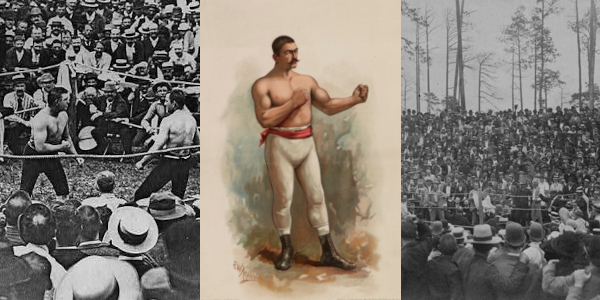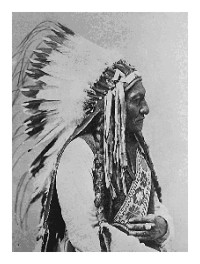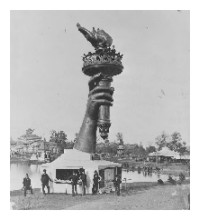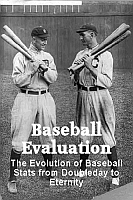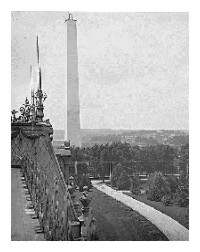
Photo above: The Washington Monument, uncompleted without capstone, from the Department of Agriculture, circa 1880. Right: Engraving of the view of the Statue of Liberty from the Battery. Source: Library of Congress.
Click here to Sponsor the page and how to reserve your ad.
-
Timeline
1882 - Detail
February 7, 1882 - John L. Sullivan defeats Paddy Ryan for the American boxing championship in one of the final bare knuckle championship fights under London Prize Ring Rules.

It is a bit of a misnomer, the crowning of a boxing champion in the centuries prior to 1900. For the most part, there was no organization that declared who was the American boxing champion in 1882, although, if there were one, Paddy Ryan would have been that man going into the fight. There was certainly no World boxing champion during that decade either, although, if there were one after the fight, which John L. Sullivan won, it would have been Sullivan. He is regarded as the boxing champion for ten years after it, both American and World, in both the world of the London Prize Ring Rules, i.e. bare knuckle boxing, which was on its way out, and the Marquess of Queensberry Rules, boxing with gloves, that was on its way in. Whew!
But what does all that mean to the actual event in 1882? Who were the men who fought the contest, their history both before and after? What are London Prize Ring Rules or the new fangled Marquess of Queensberry Rules, which are still, in many ways, in effect?
Let's start with the fighters. Paddy Ryan was the acknowledged champion going into 1882. He hailed from Tipperary, Ireland and lived in Troy, New York, known as the Trojan Giant. He worked as a blacksmith, in construction on the Erie Canal, and as the proprietor of a saloon. In 1877, at twenty-six years old, he began boxing. Standing 6'0 and 1/2" and weighing an estimated one hundred and ninety pounds, Ryan fought under the London Prize Ring Rules, which, while bare knuckles were the norm, also allowed wrestling tactics. By 1880, Paddy Ryan was thought ready to fight for an American championship, as far as there was one. It was, at the time, thought Joe Goss, an Englishman, was the champion. On May 30, 1880, Ryan bested Goss, reportedly weighing twenty pounds less than Ryan, in the town of Collier's Station, West Virginia in the 87th Round, and was boasted as the American champion.
John Lawrence Sullivan was known as the Boston Strongboy, participating in illegal bouts while a youth and doing exhibition tours throughout the country. He had enrolled in Boston College, but quit to pursue a pro baseball career circa 1875. That career eventually fizzled, but his professional sports tenure was just beginning. Sullivan was 5'11 3/4 inches tall, one hundred and eighty pounds, with a 74" reach. Including exhibitions, Sullivan fought and won over four hundred and fifty fights. By 1882, a prize for a championship, as much as they were acknowledged, was set up with Paddy Ryan. Ryan considered it, at the time, to be his last fight. The bout was scheduled to take place in Louisiana, but Governor Samuel McInerney deemed it illegal. The organizers moved it to Mississippi, even though their governor, Robert Lowry, deemed it illegal as well, despite no written statute.
The fight would take place on February 7, 1882 in Mississippi City, Mississippi in an oak grove in front of the Barnes Hotel under the old London Prize Ring Rules of bare knuckles and wrestling allowed. A prize of $3,500 (New York Times reported $5,000) was at stake. Two thousand to five thousand spectactors were estimated as present. Betting was estimated at $100,000 to $200,000. As the fight progressed, it was evident that Sullivan was faster and in better condition. Ryan, being taller, had an advantage in reach. Sullivan would be crowned the champion with his victory over Ryan in the 9th Round after twenty minutes of boxing and considered the American boxing champion, according to the New York Times and others.

Newspaper Reports
"Everything is Readiness for the Fight. The Governor Objects to the Mill Taking Place in Louisiana. And the Battle is to be Fought in Mississippi. A Large Crowd in Attendance --- Base Ball Matters.
Pugilistic. Everything in Readiness for the Fight. New Orleans, February 6 - Everything is in readiness for the Ryan-Sullivan excursion tomorrow. There will be three trains, embracing thirty-four passenger coaches. The first train leaves at 4 a.m. It is understood that the battle ground is to be between Rigolette and Pass Christian.
Chicago, Cincinnati, and Memphis contingents arrived tonight. Betting continues about even. During the day it was reported that the Governor would stop the fight. He was assured positively that the battle would be fought beyond the State line, at a point on the New Orleans & Mobile Railroad, within the limits of Louisiana, but the action of the Governor made it necessary to change it.
It looked at one time as if the mill would be postponed, but late in the evening Sullivan agreed to the choice of a place beyond the St. Louis area line. He would not, however, sign new articles.
A very large crowd assembled at the Mobile depot in the afternoon to witness the departure of the pugilists. Ryan and his seconds, James Dunn of Brooklyn, and Tom Kelley of St. Louis, left on the train, intending to lie over at the station on the line, and take the train in the morning. Sullivan remained in the city. Both men are in fine form and say they are ready to enter the ring at any moment. Tickets for the excursion, costing $10, are sold rapidly. The Louisville and Nashville Railroad Company has provided thirty-five coaches, having a capacity of 3,000 passengers. About 2,000 persons go from this city. The hour for departure is fixed for 5 a.m. Some apprehension is feared of a free fight at the ring side, which may break up the mill. New Orleans sporting men say they will do all in their power to secure fair play," The Cleveland Leader, February 7, 1882.
"Sullivan Wins the Fight. The Contest Decided Against Ryan in Nine Rounds. The Pugilists Meet in Mississippi City - Ryan Showing Weariness After the First Round - Fighting Sharp and Decisive on Sullivan's Part.
New Orleans, Feb. 7. - When the prize fight between John L. Sullivan, of Boston, and Patrick Ryan, of Troy, was first arranged it was understood that it would be fought in Mississippi, within 100 miles of New Orleans, on the Mobile Road. Both Ryan and Sullivan, after spending a few days in New Orleans, established their training stations in Mississippi, the former at Bay St. Louis, and the latter at Mississippi City. The training was proceeding well, when news was brought that a bill had been presented in the Mississippi Legislature, in session at Jackson, prohibiting prize-fighting, and punishing it wth fine and imprisonment. Panic stricken, Sullivan and his friends put back to New Orleans and were soon followed by Ryan. The former resumed training at Carrollton, an upper suburb at the west end on the Pontchartrain Lake shore. The spot which Ryan's friends had selected for the fight, near Sullivan's training ground at Mississippi City, was abandoned and another chosen on Gentilly Road, near Michaud Station, about 15 miles from this city. All was going well, when on Saturday last, a few gentlemen connected with the city churches called upon Gov. McEnery and solicited his interference to prevent the fight and he promised compliance. He sent for the two leading sporting men of the cty who represented Ryan and Sullivan, respectively, and forbade them to fight within the State line of Louisiana. They asked the Governor to point out the law of the State which prohibited prize-fighting. Gov. McEnery, thoroughly aroused, replied that he was law enough for this occasion; that he had given his orders, and if necessary would proclaim martial law and call out the State troops to enforce them. The "sports" at once yielded the point and gave the Governor an assurance that his order should be obeyed and the fight should not take place in Louisiana. This made necessary another change of base, and it was finally decided to return to the first programme, slightly amended, especially as an assurance was given that the bill introduced at Jackson had been abandoned in the face of a general protest from the people along the shore, who profit by visits from strangers. The spot finally agreed upon, therefore, was on the sea shore, in front of Barnes's Hotel, at Mississippi City. This is a point 70 miles from New Orleans and 60 miles from Mobile, in Harrison County, Miss., and just abreast of Ship Island, of war fame.
Sullivan and Ryan arrived on the ground at 8 o'clock this morning, and went to Barnes's and Tegarden's hotels, respectively. Both were in superb condition. The excursion train, which consisted of 14 coaches and carried about 1,000 people, left New Orleans at 5 o'clock this morning and reached the ground at 10:30. At 11:30 the stakes were driven, about 1,500 people having assembled. Sullivan was the first to get in the ring. He had on a cap, and was wrapped in a blanket. He looked very pale. Fifteen minutes later Ryan appeared, smiling serenely. Ryan got the choice of corners, and after considerable bickering Alexander Brewster, of New Orleans, and Jack Hardy, of Vicksburg, were chosen joint referees. The ring was cleared at 11:50 A.M. "Pat." Mealy offered to bet $100 to $500 that Ryan would knock Sullivan down first. Sullivan cast his cap into the ring at 11:45. One hundred dollars to eighty was offered and accepted on Sullivan. Sullivan was seconded by Billy Madden, Joe Goss, and Arthur Chambers.
At exactly 11:58 o'clock the men toed the scratch and shook hands for the first round. Both men sparred cautiously for an opening. Ryan led with his right, but fell short and caught in return a hot one from Sullivan's left on the face. Exchanges then became short and quick, and Sullivan finally knocked Ryan down with a severe right-hander on the cheek. Time - 0:30.
Second Round - Sullivan at once rushed to his man and let go with his left, which caught Ryan on the jaw. Ryan closed with him, and they wrestled for a fall, Ryan winning and falling heavily on his opponent. Time - 0:25.
Third Round - The men came together with a rush, and Sullivan, after making three passes, knocked Ryan down with a terrible right-hander on the chest. Time - 0:04.
Fourth Round - The men sparred, for perhaps a second or two; both feinted; and then Sullivan went for Ryan's face, putting in a stinging blow square on his nob before they closed. Slugging then began and continued until Ryan was forced into and upon the ropes, when he went to the grass. Time of round 20 seconds.
Fifth Round - This was a repetition of the previous round, both men closing and putting in their best work. The attack of both men was confined to the face. Ryan succeeded in bringing Sullivan to his knees at the close of the round.
Sixth Round - Sullivan came up smiling, but it was evident that Ryan was not only suffering, but was somewhat afraid of his antagonist. Sullivan lost no time, but went in to win. Ryan, however, closed, and getting Sullivan across the buttock, downed him.
Seventh Round - This round was a short one. The men closed and hitting was continued for a few seconds, when Ryan went to the grass a wreck. Sullivan came to his corner smiling. Ryan, however, had the grit to come up for another round.
Eighth Round - When time was called the men came up promptly. Ryan was decidedly weak, but he made a gallant struggle. Sullivan fought him over the ring into the umpire's corner and over the ropes. Upon getting off the ropes Ryan rallied, but went down on one hand and one knee. A foul was looked for, but, though Sullivan had his hand raised to strike, he restrained himself as Ryan rose. Both men were retiring to their corners when the seconds of each cried "Go for him," and the men responding, again came together. They closed and then clinched, and after a strong struggle both went down.
Ninth Round - Ryan failed to come to time and the fight was declared in favor of Sullivan. Ryan and Sullivan were visited after they had gone to their quarters. Ryan was lying in an exhausted condition on his bed, badly disfigured in the face, his upper lip being cut through and his nose disfigured. He did not move but lay panting. Stimulants were given him to restore him. He is terribly punished on the head...," New York Times, February 7, 1882.
Buy Chronology

How the Rules Changed?
The London Prize Ring Rules had been established in 1838, with revisions in 1853, all based on the seven rules of bare knuckle boxer Jack Broughton back in 1743. They retained the base idea of bare knuckle fighting and no timed rounds. Rounds were over when a boxer went down, but came to his feet thirty seconds after resting and eight seconds to rise. Punches, throws, and wrestling tactics were allowed. Additional rules within the revisions of 1853 were a ring of twenty-four feet square on turf, boots allowed with spikes, no head butting, gouging, or biting allowed, and blows below the waist or when a man is down would be considered foul. There were also rules about how betting should be placed and paid.
Although the 1882 fight between Sullivan and Ryan is often considered one of the final American heavyweight championship fights under the London Prize Ring Rules, other fights, including a few by Sullivan, did continue to be held in that fashion through the end of the decade, including a World Championship fight between Sullivan and Jack Kilrain in 1889, the last such title defense under the old rules.
Marquess of Queensberry Rules had been around for decades, written in 1865 by John Graham Chambers, published in 1867, and endorsed by the 9th Marquess of Queensberry, John Sholto Douglas, thus their name. Championship boxing under these rules slowly gained traction; in 1876, former English champion Jem Mace used them in his bout with Bill Davis in Nevada. By 1889, after the Sullivan Kilrain bout, they became the standard. How did they differ? There would be no wrestling. Rounds would be timed, three minutes in length. Unlike today, there was no stated limit to the number of rounds. A fighter must rise within ten seconds of being knocked down or the fight be considered over. No spikes on their boots would be allowed. Boxing gloves would be used and be fair-sized.
After the Fight
After his victory over Paddy Ryan, Sullivan went on an national exhibition tour with five other boxers for the next two years, fighting all comers under Queensberry Rules for $250. Eleven men were reported knocked out by Sullivan from 1883-1884. Sullivan continued as de facto American champion through 1887-9 when his additional title as World Champion was bestowed by the presentation of a belt (1887) and solidified after besting Jack Kilrain (1889). The Kilrain fight on July 8, 1889 is often considered the last bare knuckle championship bout (perhaps gaining a distinction as now contended for a world title) and first boxing match covered extensively by the press. It was held in Richburg, Mississippi and lasted seventy-five rounds out of a scheduled eighty. The fight drew three thousand spectators.
Sullivan did not fight for three years after the Kilrain bout. On September 7, 1892, Sullivan fought Gentleman Jim Corbett in New Orleans under Queensberry Rules. Ten thousand spectators watched in the Olympic Club. Corbett knocked Sullivan down and out in the 21st Round. It would be his only loss. Although Sullivan is considered the last bare knuckle champion, he fought most of his bouts under Queensberry rules. It is estimated that only three were fought bare knuckle. Over the next twelve years after losing to Corbett, Sullivan fought various exhibitions. His official boxing record, not including exhibitions, was 47 wins, 38 by knockout, 1 loss, 2 draws, and 1 no contest.
For Paddy Ryan, his boxing career continued, but not with the frequency or success of Sullivan. He fought a total of ten major fights, plus other fights under both sets of rules, and more than twenty-five exhibitions. In fact, Ryan fought Sullivan twice more; in Madison Square Garden on January 19, 1885, called no contest when the police intervened, although some consider it a loss, and in San Francisco before eight thousand spectators in 1886 when he was knocked out by Sullivan in the 3rd Round.
Image above: Montage (left) John L. Sullivan, 1882, José Maria Mora. Courtesy Wikipedia Commons; (right) Paddy Ryan, 1887. Courtesy Library of Congress. Below: Montage (left) First round of Sullivan-Kilrain match, 1889, Ernest Marx; (center) chromolithograph of John Sullivan, 1883, Edward Windsor Kemble; (right) Fifteenth round of Sullivan-Kilrain match, 1889, Thomas Pye. All courtesy Library of Congress. Info Source: The Cleveland Leader; "February 7, 1882: Sullivan vs Ryan," 2021, Patrick Connor, thefightcity.com; Eugenecarsey.com, Historic Boxing Newspapers; New York Times; Wikipedia Commons.
